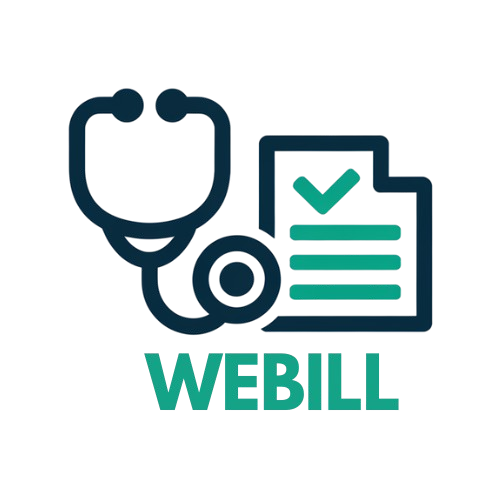Table of Contents
- Introduction to Interventional Cardiology Billing
- Why Accurate Billing is Critical in Cardiology Practices
- Common Challenges in Interventional Cardiology Billing
- CPT & ICD-10 Codes Specific to Interventional Cardiology
Compliance and Regulatory Requirements - Technology’s Role in Cardiology Billing
- Strategies to Improve Claim Approval Rates
- How to Reduce Billing Errors and Denials
- Benefits of Outsourcing Interventional Cardiology Billing to Experts
- Revenue Cycle Management Best Practices
- How Webill Health Simplifies Interventional Cardiology Billing
Interventional Cardiology Billing 101
Interventional cardiology billing is the most intrigued part in medical billing because of the uniqueness of the treatments provided and the accuracy of codes used, and the regulations that keep on varying. We realize that billing partners must do more than simply process claims quickly at Webill Health. We know that cardiology practices must have a billing partner that ensures maximum revenue, with practices remaining compliant.
One can find procedures such as angioplasty, stent placements, and catheter-based procedures in this billing process which have several CPT codes, modifiers, and guidelines based on the payers. Claim denial, delayed payments, and compliances risks in case of even minor mistakes can be avoided only with proper prior expertise.
Why the Precise Billing is Important in the Cardiology Practices
The procedures of interventional cardiology are of high value services and each rejected claim may cost a practice a huge amount of money. Proper billing will guarantee the following:
the proper CPT and ICD-10 codes are written
Record keeping satisfies payer and regulatory requirements
Practices are remunerated on time on their services
To cardiologists time is literally money not only in regards to revenue but also patient care. Through the streamlining of the interventional cardiology billing, billers allow the providers to spend less time trying to receive payments and more time receiving patients in need.
Interventional Cardiology Billing Common Challenges
Cardiology is associated with peculiarities of billing:
Complicated rules of coding in several steps
Medicare and Private Policy Changes Majority of Healthcare Costs Occurred
Confusion over bundling of procedures that result in coding confusion
Expensive procedures documentation Medically necessary records
High cost management of denials
CPT Codes Specific to Interventional Cardiology ICD-10 Codes Specific to Interventional Cardiology
Proper billing is based on the knowledge of proper codes. Examples include:
92928-Stent insertion (PCI)
93458- coronary angiography, left heart catheterization
92980 balloon angioplasty of coronary artery
When these codes are properly used with appropriate modifiers, they will give optimal reimbursement. Our Webill Health team is up to date on any changes in coding so that your claims are compliant, accurate and profitable.
Regulatory and Compliance
Regulations of healthcare are very rigid, and the interventional cardiology billing requires compliance with:
HIPAA compliance to secure patient data Security
Coverage procedures under Medicare & Medicaid
Medical necessity documentation demands
Anti-fraud procedures
With failure to comply one would be fined heavily or even suffer legal problems. Webill Health allows all claims to undergo the compliance verification prior to submission.
Technology’s Role in Cardiology Billing
Current billing is a very technology-driven mechanism:
Accuracy with the use of artificial intelligence tools in coding
EHR integration to smooth documents
Claim scrubbing to identify questionable claims prior to submitting it, automated.
Financial performance tracking dashboards
At Webill Health, our billing is already using the latest technology to improve the time it takes to process claims and decrease denials.
Ways to Increase Claims Approval Rates
In order to have top claim acceptance rates:
Check patient insurance prior to the process
Be sure medical necessity documentation is complete
Utilize CPT and ICD-10 newest codes
Make claims in time
Check on claim status and delay checks and actions
The billing team at our end is not restrictive, we make it a point to follow up to ensure that your cash flow is at a stable position.
How to Reduce Billing Errors and Denials
Some effective steps include:
- Regular coding audits
- Continuous staff training
- Use of denial tracking reports
- Clear communication with physicians
By partnering with Webill Health, cardiology practices significantly reduce error rates and denial rates, leading to faster payments.
Best Practices Revenue Cycle Management
Effective cardiology billing is an element of integrated revenue cycle management (RCM) plan:
- Front end chores such as insurance verification
- Activities such as proper coding and submission of claims mid-cycle tasks
- Back office processing such as denial management and posting payments
- Our RCM will guarantee constant cash flow and less leakage of revenue.
Cardiology Trends in Billing In the Future
Look out for in the next few years:
- Greater automation and AI of billing
- Cost of greater telehealth billing needs
- Tighter regulations on compliance
- Increased payer monitoring
Here at Webill Health we are ready and already tackling these changes to keep our clients ahead of the change curve.
Final Verdict & Important Takeaways
Interventional cardiology Billing is quite technical and needs special skills, care and technology. Through a Webill Health partnership, your practice will:
- Maximize revenue
- Reduce denials
- Stay compliant
- Saving priceless time
When it is finally time to ease into your billing process, Webill Health is at your service.
